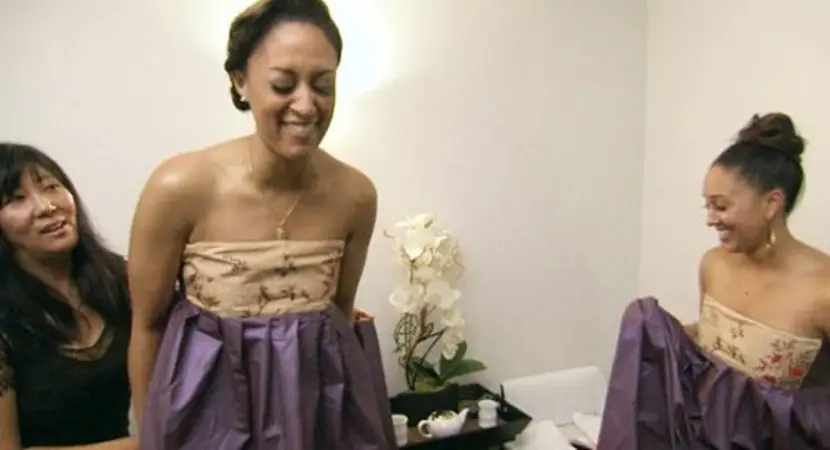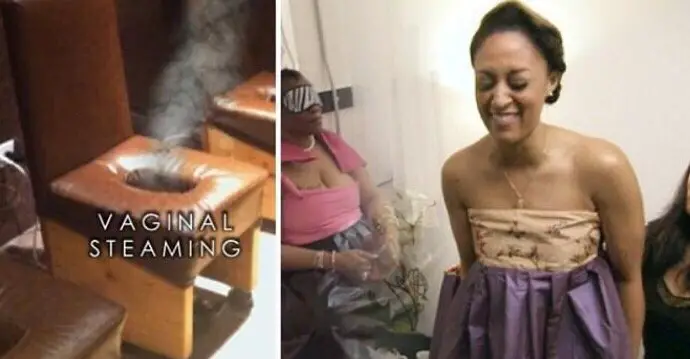It probably makes you a little uncomfortable the first time you hear the name. Vaginal steaming? Though, when you think about it, you realize its potential as a great spa treatment. It’s just the word “vagina” that makes you uncomfortable, right?
MUST READ: 9 Things You Didn’t Realize Can Cause Vaginal Odor
Let’s get real, ladies. We have them, and there’s nothing wrong with inventing spa services to treat them. Why not take a good look at what vaginal steaming is? We’ll tell you about its history and purpose, what people are saying about it, and what to take into account if you’re considering it!
The history of vaginal steaming
Yoni steaming, as it’s referred to in Korea, is a holistic herbal solution for menstrual cramps and general vaginal “freshness.” The ancient practice was also popular among the Maya, and its existence across the globe makes you think there might be something to it. V-steaming was (and is) very popular among healers, and is said to cleanse and revitalize the uterus.
So, wait—vaginal steaming is a misnomer if it doesn’t cleanse the vagina, right? Is it about the uterus, or what?
There is a great deal of debate on what vaginal steaming really does, so for the sake of this article we’re just going to refer to your overall lady-bits. V-steaming is supposedly good for it all, particularly during menstrual cycles. In recent years it’s gained special popularity in pop culture, particularly after its endorsement by Gwyneth Paltrow, who absolutely loves holistic treatments and solutions. She’d solve world hunger with mint leaves if she could.
So, how’s v-steaming work?
There are two ways to go about vaginal steaming: the ancient or traditional way, and the fancy modern-spa way. Both forms facilitate steam entering into the vagina, whose visceral walls absorb the chemicals released by herbs heated in the hot water you use.
At least, supposedly your vagina soaks it up. If the walls of the vagina do actually take in any of these chemical, they would enter straight into your bloodstream. Only on entering the bloodstream would there actually be any “herbal benefits” to your uterus, which is otherwise blocked off from the vagina by your cervix.
In olden times: Back in the day, both in Korea and in Central America where vaginal steaming was most commonly practiced, large bowls were filled with hot water poured over a specially-crafted collection of herbs. A woman would sit spread-eagle over the bowl, allowing the steam to enter past her labia and into the vagina.
Contemporary spa treatment: Today if you go to a spa for a v-steam, you’ll first consult with a gynecologist and then receive the treatment in a quiet room with a table you can recline back on. Your legs will be put in stirrups, much like when you get your annual pap. Undressed only from the waist down. You’ll have your legs wrapped in a towel or soft fabric to create a sort of “tunnel” the steam can travel down. The steam machine (equipped with herbs) will then billow steam between your legs.
What are people saying about it?
Yea: Fans of vaginal steaming will talk about its holistic value, and its rich cultural value from different places around the world. The treatment is said to relieve menstrual cramps, and to revitalize the reproductive system and promote the good hormones that make for healthy lady bits.
MUST READ: Vaginal Tightening Cream
Nay: There are many nay-sayers, primarily in medical circles, who say this practice might feel pleasant but has no scientific basis. The idea that steam entering into the vagina can affect the womb ignores the basic layout of our reproductive system. And any claims to aid in hormone production is completely off, as reproductive hormones come from the ovaries, not the uterus or the vagina.
The biggest arguments against vaginal steaming talk about the natural ecosystem of your vagina. There’s a flora of good bacteria, and there’s also yeast. When you have an excess of one, that leads to vaginitis and yeast infections, respectively. According to an Italian study, 84% of ladies of childbearing age suffer menstrual cramps. But most doctors say there are safer and more effective ways to go about treating them.
To steam or not to steam …
V-steaming typically takes between 20 and 40 minutes, so in terms of time it doesn’t have to be a big commitment if you want to see what it’s like. These spa services typically run at least $100, however, as consultation with the spa gynecologist is required.
If your menstrual cramps are really bad, you might be more inclined to give v-steaming a shot. Heat is, in fact, one of the best remedies for menstrual cramps—you might already have an electric blanket at home for that purpose. You do run the risk of throwing off your natural bacteria or yeast balance, but if the spa knows their stuff you should have plenty of consultation to make the best decision for you.


